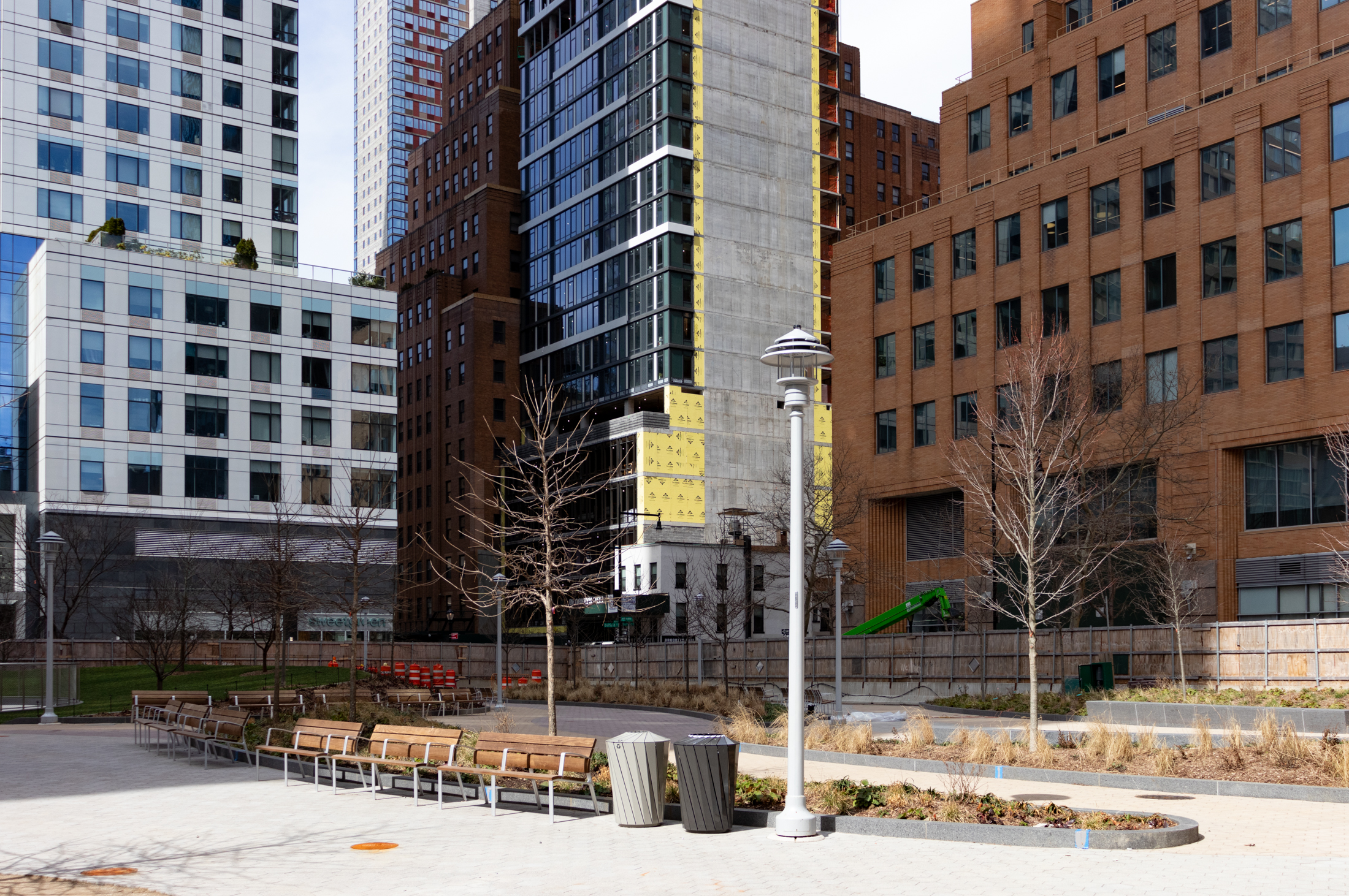Building of the Day: 235 Duffield Street, a Hair Emporium Extraordinaire
Brooklyn, one building at a time. Name: Row house Address: 235 Duffield Street Cross Streets: Fulton and Willoughby Streets Neighborhood: Downtown Brooklyn Year Built: Early 20th century Architectural Style: Renaissance Revival Architect: Unknown Landmarked: No The story: Like all of Downtown Brooklyn’s side streets, Duffield Street was once mostly residential. It was lined first with…
Brooklyn, one building at a time.
Name: Row house
Address: 235 Duffield Street
Cross Streets: Fulton and Willoughby Streets
Neighborhood: Downtown Brooklyn
Year Built: Early 20th century
Architectural Style: Renaissance Revival
Architect: Unknown
Landmarked: No
The story: Like all of Downtown Brooklyn’s side streets, Duffield Street was once mostly residential. It was lined first with wood-framed row houses, and later, brick and mortar row houses and small tenements.
This lot used to have one of those wood-framed row houses on it, part of a group which included the neighboring house. These houses have evidence of use as safe houses and escape routes on the Underground Railroad.
This building replaced one of the frame houses, and was built sometime in the early 20th century. It is first mentioned in the papers in 1906.
It was constructed as the block was rapidly transitioning from mixed use residential to commercial, and was probably built with the two storefronts on the bottom two floors.
This white brick Renaissance Revival building is somewhat a rarity in the neighborhood. Most of the row houses are much earlier, dating from either before or just after the Civil War. They were made of wood or brownstone.
This would have been considered quite a modern building for its day, as innovative as one of the modern glass buildings that are rapidly replacing its neighbors.
This was the building that hair built. In the beginning, it was known as the Gem.
Brooklyn Eagle ad, 1911
For many years, 235 Duffield was known to Brooklyn’s women as THE place to purchase wigs and hairpieces.
The first ads appear in 1911, as the Gem Hair Parlor announced that it was moving here from nearby Fulton Street. The ad intimates that this was their building.
1916 ad, New York Age
Gem sold wigs and hairpieces, and also operated a beauty salon. They took up both commercial floors of the building, and according to one ad, had a large sign on the roof. You couldn’t miss them.
If a woman wanted to look her best in the fashions of the day, she needed to have a lot of hair. The styles required large put-up pieces of hair in buns and upsweep ‘dos, upon which one set an even larger hat.
Wigs and extensions have been popular for centuries. Since the world was much smaller in the 20th century, with faster travel and more ports of call in the world, the hair market had grown. Human hair could be sourced from all over now.
Gem Hair Goods and the Gem Hair Parlors were owned by Harry Jacobs and his wife, Hannah. She probably is the woman appearing in the early photographs.
1912 ad, Brooklyn Eagle
The couple lived upstairs over the store on both upper floors. They had three children; a son and two daughters, all small children. They also had a nanny/housekeeper living here as well.
Google Maps
The Jacobs’ were not averse to expanding their market, either. Ads in the mainstream Brooklyn papers such as the Eagle and the Standard Union advertised the latest in European hair and styles. But at the same time, they were also advertising in the New York Age, Brooklyn’s African-American newspaper.
1915 ad, New York Age
These ads featured kinkier and curlier hair aimed at the black women of Brooklyn. They sold wholesale and retail, and were a source of hair products for black beauty parlors across the city.
They also sold a skin lightening cream guaranteed to make you a few shades lighter. No shock there, these creams are still being sold today.
They were, apparently, hair geniuses, and innovators in cosmetology. An ad in 1916 touted their patented invention to curl hair.
1918 ad, Brooklyn Eagle
The strands of hair were wrapped around an aluminum hair pin and inserted in cylinders that hung from an apparatus suspended from the ceiling. Hot water ran through the cylinders and the resulting heat set the hair.
The process was so successful; the Jacobs’s fiddled around with it more and made it more portable. Their new apparatus, which they also wholesaled to other salons, was launched at a beauty salon show in 1922. They called their new company the Gem Air Permanent Wave Company.
1920 ad, Brooklyn Eagle
By 1927, the name of the salon had changed. They were now the Economy Beauty Shops. From the ads, it also looks as if they were able to expand to Manhattan, as well.
They were still using the “Gem-Air” system of perming hair. But the long styles of the Edwardian period had long ago given way to the short Marcel waves of the Flappers.
1927 ad, Brooklyn Eagle
It seems likely that their wig market declined rapidly as shorter hair styles became more than a fad, and became a permanent state of being for the modern woman. Perhaps they continued to sell to both their black and white clientele through mail order.
The ads for the wigs stop running in the New York Age in the early 1920s. The ads for their beauty parlor end in the Eagle and Standard Union in the late 1920s. Perhaps they did not survive the Great Depression — a time when such luxuries were unavailable to a great many people. What happened to the Jacobs family?
Today, the fact that the building still stands at all is a bit of a wonder. Construction goes on all around it. The hair salon is now a nail salon. The need for beautification endures.
Top photograph: Scott Bintner for PropertyShark
Google Maps



















My wife’s business (with her 2 business partners), an advertising company, called Ashay Media Group (www.ashay.com), used to be at that location for about 12 years until about 2 years ago. They were upstairs on the 3rd floor. We never knew the history of this building- so interesting, and thanks for posting. We drove past it last week, and it looks completely vacant now- you can see clear through the roof if you look in the top floor windows. Also in the back of the building, the facade is gone, exposing the insulation. The current landlord was trying to unload the building about a decade ago for $300K, and no takers. If only we had the foresight! Wow. Who could imagine now what is happening there!
This is an interesting story, as always in these features. However, I walk weekly on this block, as I use the pool at the Brooklyn Sheraton and find this street to be really “skanky” feeling. It’s sort of desolate, sort of dirty and grungy with the old hotel (Prince?) full of rats and probably prostitutes (I think now being rehabbed). And there never seems to be people around. Plus I can’t speak much of the buildings as they seem to be old and crumbly and then festooned with ugly awnings. Not a picturesque block, I’m afraid.